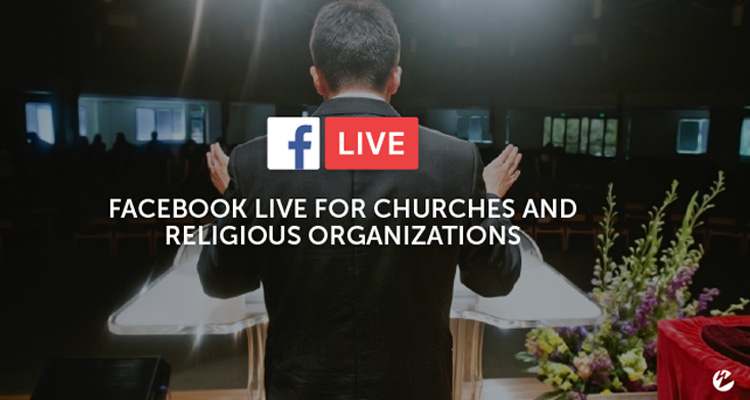Thinking Ahead: As Churches Pivot Back To Live Services, How to Maintain Streaming

A view from one of the video camera positions at The Summit Church’s Capital Hills campus in Raleigh-Durham, North Carolina, prepared to capture a service for livestreaming. Photo via Bruce Colbert of CSD Group.
As a country, we’re approaching a full year with an increased need of socially distanced livestreams for thousands of congregations. The main question derived over that time is: What have we learned?
More importantly, from what’s been learned, what can be done to improve a church’s overall offerings, without additional major investments?
Among the more valuable aspects learned in recent months has been the importance in encouraging engagement among online audiences. Many church attendees were regularly attending in-person services as recently as March.
Quality streaming of services was already in place at many churches before the pandemic. Others, however, began streaming from scratch a few months ago.
Why was streaming not a given for all churches a few months back? “For many, the thought was ‘Everyone who needs to be here is here.’ Streaming was seen as more of an outreach,” noted Todd Heft, director of media arts at Hillside Community Church in Bristol, Connecticut.
Staying Connected
As restrictions for in-person gatherings were enacted last year, though, streaming quickly became beneficial to churches nationwide.
“Because of the pandemic, we suddenly had a lot more people watching than were attending,” explained David Leuschner, executive director of Digital Great Commission Ministries.
Among the churches new to streaming, many now “see it’s a way to continue to connect with members,” added Heft.
In fact, for churches that hurriedly installed something to get online last March, the mindset has since largely morphed to “how can we do better”?
Among the churches that recently began streaming, oftentimes they originally chose to “replicate their (in-person) service. Frequently, they tried to replicate all the elements,” noted Leuschner. Since then, many houses of worship have adjusted, “realizing that they have to do it differently for the stream.”
Looking to Improve
Ways to “do better” include incorporating engagement into your stream. Providers of all types, including free services, can help in this area.
“If you are streaming on Facebook, Twitter or YouTube, for example, welcoming them (individually) online, is something you can do,” said Heft. “Having someone who can engage with the audience virtually, gives it a more personal feel. For what can be a seemingly one-way push, it can make it more engaging.”
Using Data in Decision-Making
When determining whether streaming has been beneficial for the church, analytics are a key tool.
“I tell churches, unless you have metrics that tell you that you are being successful, there’s really no way to judge your success,” noted Leuschner.
To get a grasp on how successful a church’s stream has been, it’s worth digging into the numbers.
With analytics, one can determine “how long they tuned in for and whether you’re losing that online audience,” said Leuschner. When looking how long an online audience typically watches, he noted, “People’s attention spans are about seven to 10 minutes.”
How does that apply to a worship service that often runs an hour or longer?
“For a sermon, if you’re on the same point for 20 minutes, you are possibly losing the audience,” said Leuschner. “If you’re on one point for seven to 10 minutes, before moving to the next, you’re probably keeping the audience.”
Give It Time to Determine if Changes Are Working
When considering a change to the worship service, analytics can again play a huge role. Upon reviewing the data, one can see if the implemented changes have led to the desired results.
It might be tempting to allow one weekend’s worth of data from services to judge, but more time is needed.
“Give it two to four weeks, to see if a change that’s been made, is effecting the audience,” noted Leuschner. With quality analytics tools from Church Online, Stream Monkey or Ikonik, for instance, you can determine who “tuned in and how long they watched. Give it a minimum of two weeks,” to see if a change has moved the numbers as desired.
How To Improve Streaming With Planning
In search of solutions on how one can improve their stream, some aren’t necessarily tied to purchasing new gear.
“I have seen some unique streams, that didn’t have a lot of cameras or technology,” noted Leuschner. Referencing one such example, he added, “(Musician) Michael W. Smith set up just a single camera. Even so, it was a successful stream that was very engaging.”
Going further, Leuschner added, “It’s not necessarily the technology, but the engagement, content, and flow.”
To help a church plan in making streaming improvements, various organizations and integrators can offer a long-term roadmap to success. “You can’t think week to week, you have to think six months down the road,” said Leuschner.
When buying gear, doing it piecemeal will likely add up to poor results. “If you need to get cameras, and buy one camera, and then six months later, buy another, or are buying cameras for the sake of buying cameras, you will likely make a mistake,” he added.
How to Improve With Technology
Upon determining desired gains are to be reached using technology, recognize wholesale system change isn’t the only path there.
Among the most impactful options, Leuschner explained, would be “providing a separate mix with audience mics for the online audience. Audience mics on the broadcast mix allow you to have a feel of the room.”
Such measures are particularly helpful, upon recognizing that a quality stream goes well beyond the video.
“I think a lot of people quickly learn how important audio is. And how distracting a video stream can be, if their audio isn’t (up to snuff),” added Leuschner.
Another key way to improve the audio portion of a stream, noted Heft, is having “a connection between your soundboard and a connection to your switcher. Connecting the audio and your video, that’s probably the most important piece. That can be done at low cost or no cost.”
Beyond the potential sound improvements, Heft suggested another integral way to improve a stream.
“If you have a good camera, make sure to have a very good lens. One that can adapt well to low-light situations, and can overcome some lighting problems to a certain extent,” he said.
And with all the attention on audio, video and lighting gear toward improving a stream, Leuschner pointed in another direction.
“When it comes to streaming, and one looks through the lens of an auditorium with a stage, the most important piece often is the encoder,” said Leuschner. “What is actually putting you online is the encoder. Yes, you need the lights, and a camera. The encoder, though, is what you need to get onto your website.”
Livestreaming Offers Many Choices
When deciding on a livestreaming provider for a church, there are numerous options to consider.
At first glance, going with a free service or one at minimal cost can seem tempting. Among the most popular free choices are YouTube or Facebook.
If your church is in need of a provider that offers more features along with increased reliability, various services including Streamingchurch.tv, TruthCasting, LiveStream, DaCast, BoxCast, Ikonik Media, Vimeo Premium, Stream Monkey and SermonCast are worth a look.
With so many provider possibilities, it’s easy to reach for the free option initially. Leuschner, though, offered some insight behind the value in selecting a paid streaming provider.
By choosing a service like Stream Monkey or Ikonik, as the church’s “core stream, you have control over your content,” explained Leuschner. He contrasted that with YouTube, citing that “Using YouTube for everything (could be problematic). If YouTube doesn’t like what you are streaming, they can shut down your channel.”
Beyond control over one’s content, the quality of the stream is another worthwhile reason to opt for a subscription service.
“When your stream quality starts to suffer, that’s because some free options only allow for a certain bandwidth,” noted Heft. In such situations, the free providers begin to lose their benefit.
Looking Ahead
Even as churches envision returning to full in-person services in the coming months, streaming as a tool will not disappear.
“Churches need to understand that at any period of time, a portion of the population will not be able to attend service, because of sickness or vacations,” explained Heft. Continuing to offer the value of streaming will help maintain that audience, while keeping the door open to new members.





